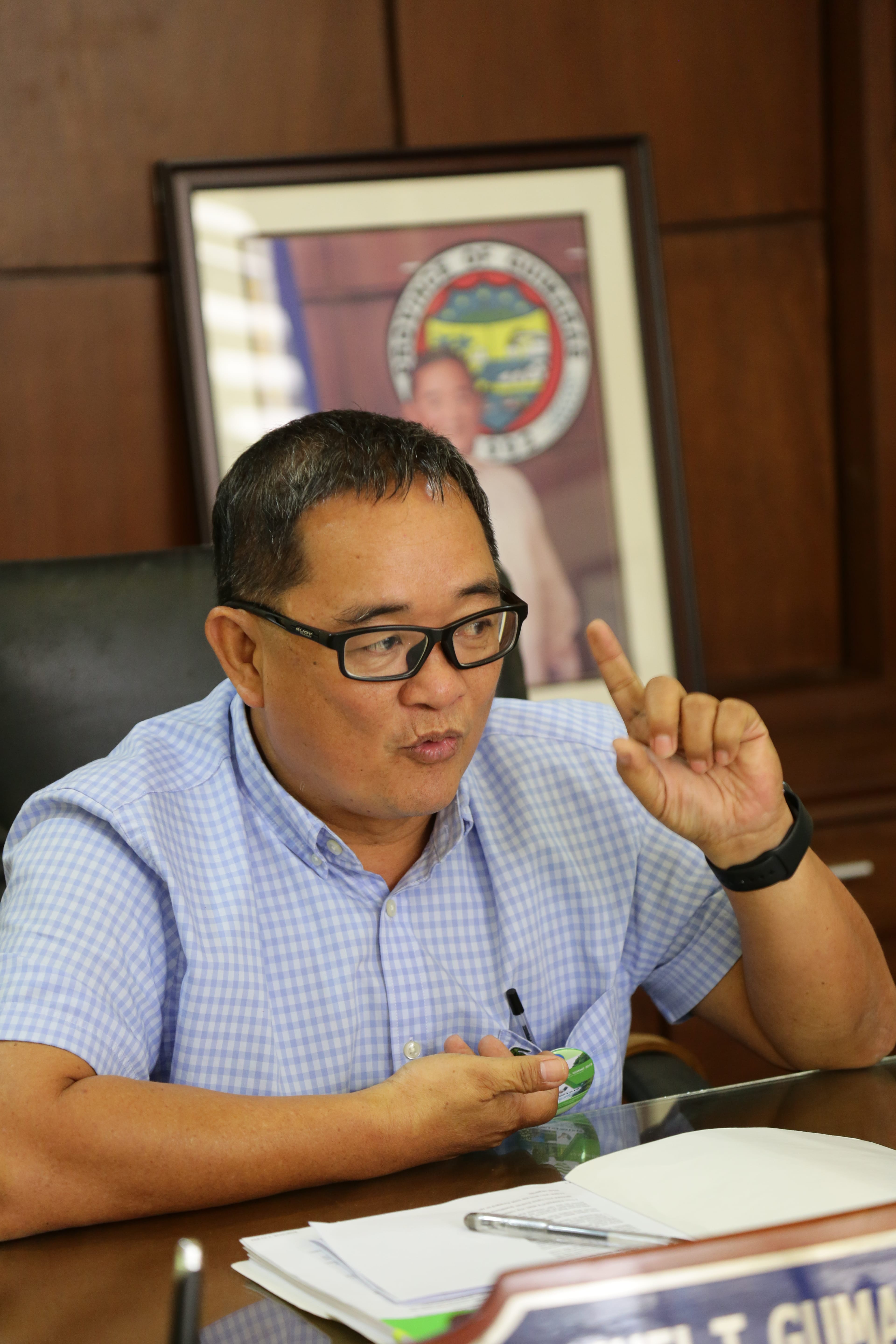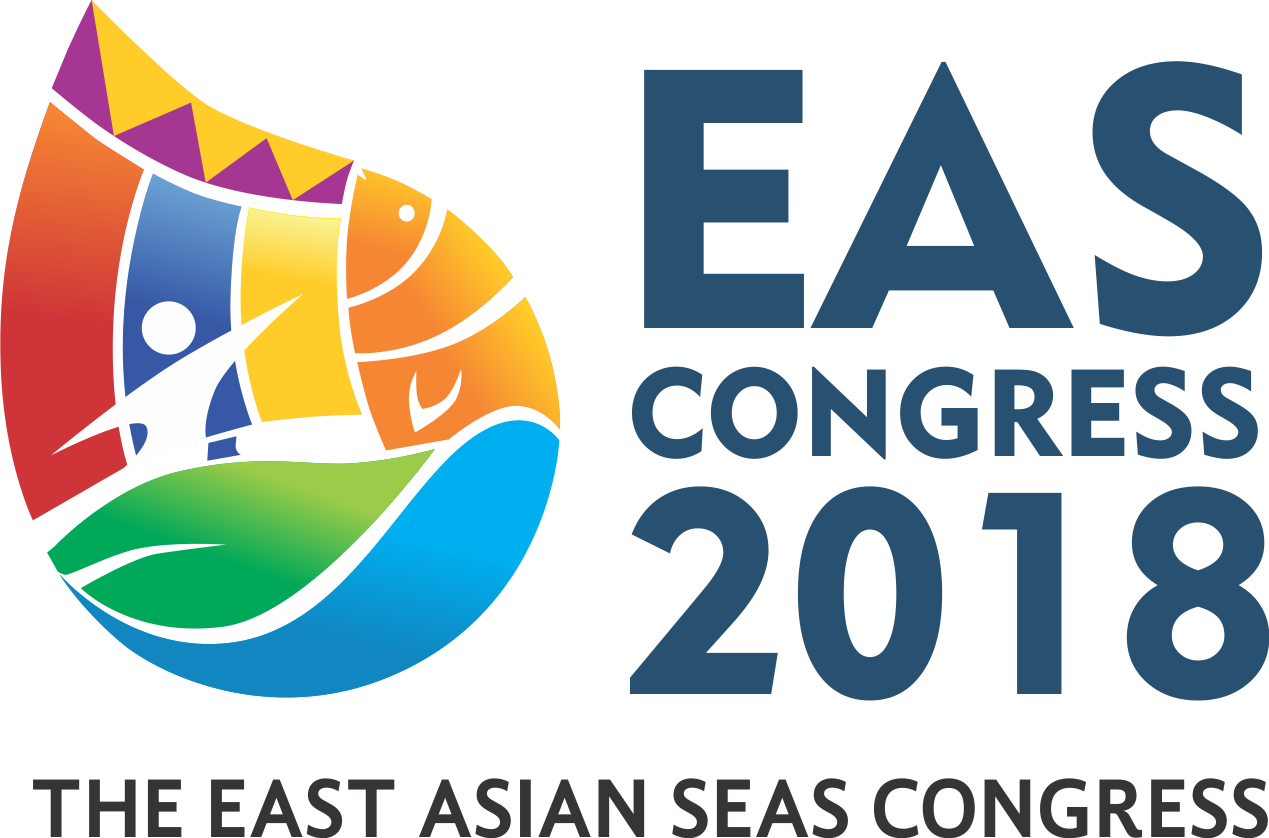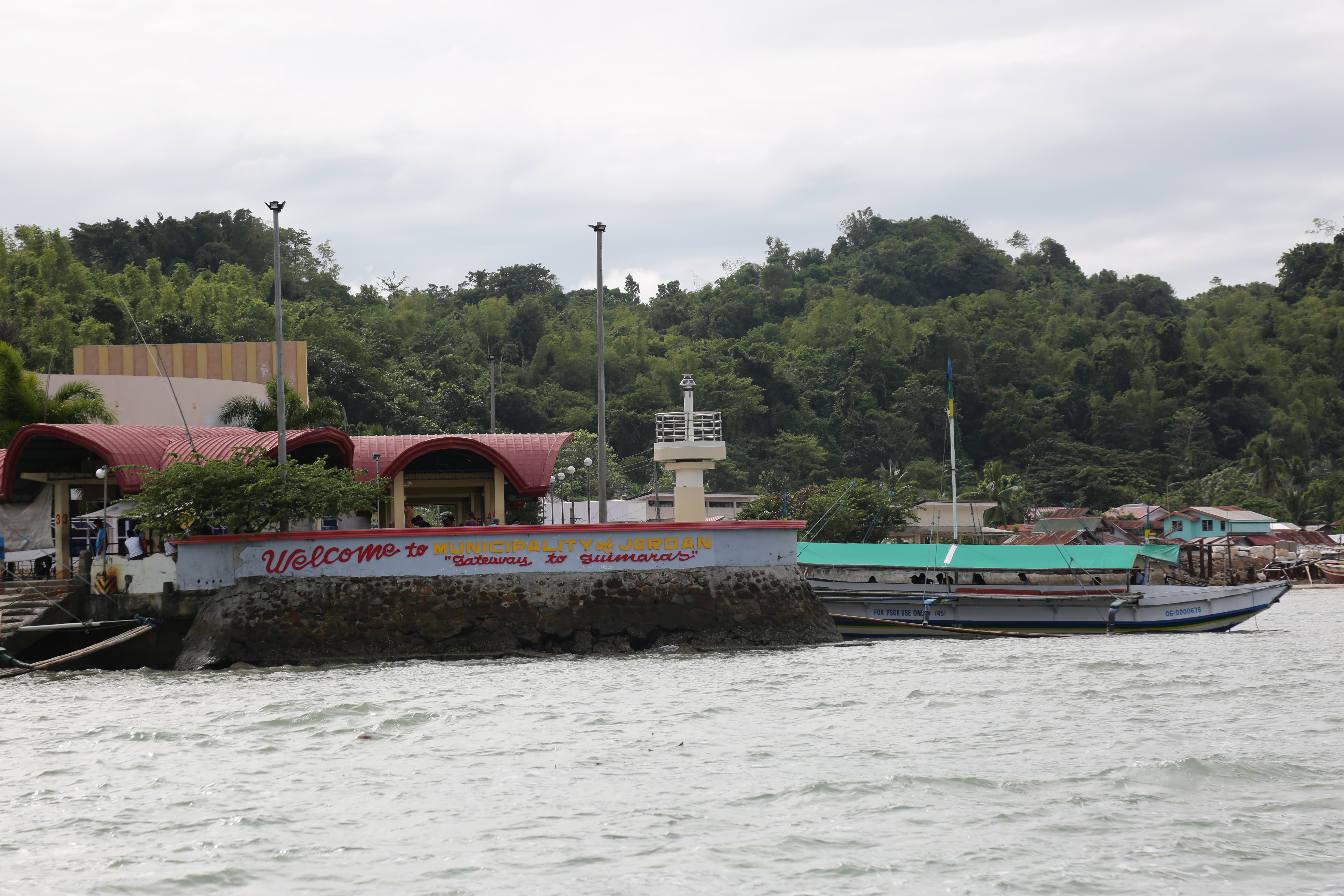There is more to Guimaras province than sweet mangoes. A biodiversity-rich island, Guimaras is home to a wide range of flora and fauna. It has a good number of endemic species, plus a diverse marine wildlife, including commercially viable fish, which has sustainably supported life not only on the island-province but in the entire Western Visayas.
Self-sufficient in fish
 Historically an agricultural province, Guimaras is a major producer of fish and other seafoods.
Historically an agricultural province, Guimaras is a major producer of fish and other seafoods.
Next to Capiz, the country’s seafood capital, Guimaras is one of the region’s top fish and seafood producers even as it doesn’t have its own commercial fishing industry to speak off.
Its more than 7,000 small fishermen produce more than enough for the province and provide its neighboring provinces like Iloilo and Negros some of its excess wild-caught fish. With that, the province currently enjoys the status of being self-sufficient in fish.
This small island province in southeast of Panay and northwest of Negros in Western Visayas, is blessed with pristine and crystal-clear waters, white sand beaches, and a number of unique islands and islets teeming with wildlife.
Comprised primarily of Guimaras Island and several minor islets—including Inampulugan, Guiwanon, Panobolon, Tangunga and Nadulao—the province has a total land area of 60,457 hectares, with a population of 174,163, according to the 2015 census by the former National Statistics Office, now known as the Philippine Statistics Authority.
Guimaras has five municipalities—Buenavista, Jordan, Nueva Valencia, San Lorenzo and Sibunag, with a total of 98 barangays.
Showcase
The region, specifically the province’s coastal, marine environment and natural resources, will be showcased by the Philippines as it plays host to the 2018 East Asian Seas (EAS) Congress Exhibition from November 27 to 29 at the Iloilo Convention Center in Iloilo City.
With the theme, “25 Years of Partnerships for Healthy Oceans, People and Economies: Moving as One with the Global Ocean Agenda,” the 2018 EAS Congress Exhibition aims to share information on various initiatives and tools contributing to the UN Sustainable Development Goals, particularly SDG 14, or Life Below Water, the Sustainable Development Strategy for the Seas of East Asia and blue-economy development in the region.
Guimaras oil spill
Little is known about Guimaras until in August 2006, when the 998-ton MT Solar 1, an oil tanker chartered by Petron, the country’s largest oil refiner carrying 2.4 million liters of bunker fuel, sank 17 kilometers off the island’s southern coast.
According to the Provincial Environment and Natural Resources Office-Guimaras, the oil spill affected about 69,152 individuals and 13,917 households, or about 47 percent of the total population.
In Nueva Valencia, which was severely affected by oil spill, 223 families or 1,017 individuals, were evacuated. A total of 5,594 families, were directly or indirectly affected by the oil spill.
The total amount of losses in Nueva Valencia alone is estimated at P237 million.
Twelve years later, although still reeling from the impact of what could be considered as one of the country’s worst environmental disasters, Guimaras is back on its feet and learned a painful lesson, not of its own doing.
Disaster resiliency
Vicente A. Sardina, Guimaras’s Provincial Environment and Natural Resources Officer, said the province is resilient to natural and man-made calamities because of its thick mangrove forests surrounding its islands and islets like the Taklong Island National Marine Reserve (TINMR).
The oil spill, he said, demonstrated the strength of Guimaras.
He recalled that the most affected areas are in the south-southwestern portion of Guimaras. Thus, he said the TINMR received a huge volume of bunker oil that affected the mangroves and seagrasses.
“Many of the mangroves, experienced mortality. Dead invertebrates, such as shells, were found everywhere on the shore,” he told the BusinessMirror in an interview last week.
The affected fishing communities were provided alternative livelihood and financial assistance. Their resilience to disasters was observed as they were able to reciprocate.
The DENR, on the other hand, provided direction in the rehabilitation of the oil spill-affected areas, such as in the cleanup of mangrove areas.
The mangroves regenerated after several years. “Mangroves not only served as a buffer during the storms but as protection of other habitats. The presence of TINMR facilitated the rehabilitation of the destroyed coastal resources,” he said.
Guimaras Gov. Samuel T. Gumarin, a medical doctor, said the province’s best natural resource is its human resource.
He credited the support of the people in achieving the province’s mission and vision for Guimaras’s local economic development that is anchored on environmental sustainability.
“What made us more resilient is that, for 13 years, we made sure that the people understand the role of environment in our survival, especially in our continued economic development in the province. With this, we need the support of the different sectors, especially the agricultural and fishery sectors. With their support, we made sure that we make policies that protect our environment, and adapt the and mitigate climate change for the future,” he said.
Green province
“A year ago we declared Guimaras as a green island because we do not like our electricity supply coming from coal and crude oil. So it is good that my predecessor saw this as part of our advocacy for a green island,” Gumarin added said.
Last year, Guimaras officially declared the province “off limits” to coal, banning the entry of coal-fired power plant and coal-mining projects in the province.
Guimaras, which hosts the San Lorenzo Wind Farm, is a producer of clean, renewable energy.
The 27 wind turbines at the San Lorenzo Wind Farm produce a total of 54 megawatts of power that is supplied to the National Grid Corp. of the Philippines (NGCP).
He disclosed that Guimaras will soon host a big solar-energy farm that can generate electricity from the power of the sun. Also in the pipeline is to put up more wind turbines in the municipality of Sibunag to produce about 3.7 MW per turbine.
Food-secure region
Regional Director Jim O. Sampulna of the Department of Environment and Natural Resources (DENR) Western Visayas said the region’s food security is anchored on the protection of the region’s environment and natural resources.
“When you protect the forest and the ocean, you protect the food source. Compared to Metro Manila, the last time I gave rice to our staff here, it costs only P1,800 per sack of 50 kilos,” Sampulna said.
This, he said, was due to the abundant supply of rice. “It is the law of supply and demand. We have plenty of rice, so we enjoy affordable rice,” he explained in Filipino.
In protecting the Panay Mountain Range, the DENR official said they go for “from-ridge-to-reef” protection policy that covers the terrestrial and marine environment—from forest ecosystems up in the mountain tops or ridges down to the reefs in the oceans. This results in the robust rice and corn harvests, plus other agricultural and fisheries and seafood products.
“When you take care of your environment, it takes care of you,” Sampulna added.
Ecotourism
Gumarin said besides its strength in agriculture and fishery, Guimaras aspires to achieve the province’s full potential as the ecotourism capital of Western Visayas.
“Thirteen years ago, when we formulated our mission and vision, this was based on the capacity and potential of our environment. For more than 13 years now, we dream of becoming the ecotourism capital in [Western Visayas]. Our economic platform is based on our environmental capacities,” he said.
Besides the white-sand beaches and many other areas where visitors can commune with nature, there are hidden secrets in Guimaras, like the TINMR, which won last year’s Para El Mar (For the Seas) Awards as Best Marine Protected Area (MPA).
Locally managed MPAs were also candidate ecotourism sites.
Guimaras MPAs alliance
Last year, with the DENR Western Visayas taking the lead, various stakeholders in Guimaras signed a memorandum of agreement that created the Guimaras Alliance for the Protected Areas and Sanctuaries (Gapas) with Gumarin as its chairman.
Gapas is composed of Guimaras local government units, including the towns of Jordan, Nueva Valencia, San Lorenzo and Sibunag, the DENR, John B. Lacson Foundation Maritime University, Bureau of Fisheries and Aquatic Resources-Guimaras, Philippine Coast Guards, and the management boards of the protected areas and sanctuaries in the province.
They were Avila Marine Sanctuary of the municipality of Buenavista; Balcon Marine Protected Area in Jordan; Barangay Dolores Marine and Fish Haven in Nueva Valencia; Igang Bay Marine Sanctuary in Nueva Valencia; Jordan Marine Turtle Sanctuary in Jordan; Pamanculan Fish Sanctuary of Sibunag; TINMR in Nueva Valencia; Tan-Luc Marine Protected Area in Nueva Valencia; Toyo Reef Marine Sanctuary in Nueva Valencia; and Tumalintinan Point Marine Protected in San Lorenzo.
Three other MPAs are on the tentative list or in the process of assessment for future legislation. They are Sinapsapan MPA, San Antonio MPA and Santa Ana Bay MPA.
The alliance hopes to link arm and strengthen the island province’s network of MPAs to better protect its coastal marine environment and natural resources against various threats, mainly, illegal commercial fishing and use of destructive fishing methods and active gears.
Gumarin said protecting and conserving the province’s coastal and marine environment through the establishment of MPAs is a must for the survival of the province’s fishery sector and the people dependent on the ocean’s bounty.
Of the province’s 98 barangays, 56 are in the coastal area. While there are existing locally managed MPAs, he said there are other areas around Guimaras can be set aside for conservation.
“Actually, we need more MPAs. Because we want to make sure that our production areas will continue to produce fish. We do not allow fishing in core zones. Outside it, fishing is allowed but not in the core zones,” he said.
Asked how important is establishing MPAs to Guimaras, he said: “For me, the future of MPAs is the future of the Guimaras.”
Truly, there is more to Guimaras than sweet mangoes.
In Photo: A welcome sign greets visitors entering Guimaras via the seaport in the municipality of Jordan, the gateway to the island province.
Image Credits: Ricky los Bañez/DENR-SCID
Published in Business Mirror.

